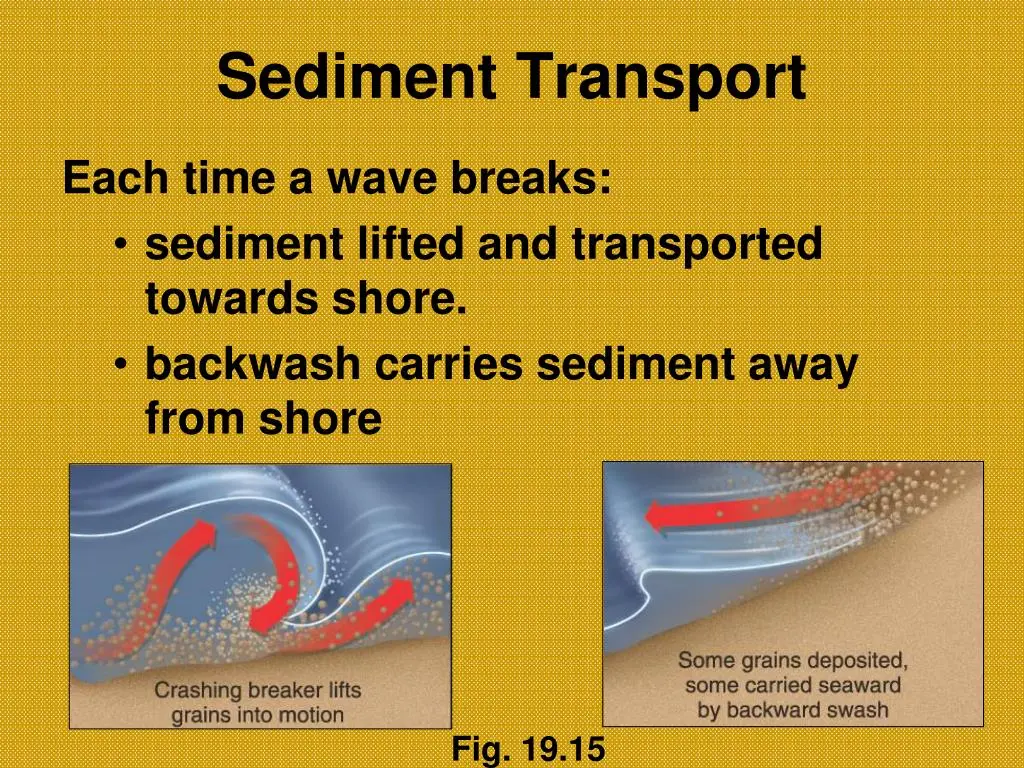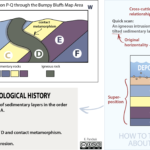Let’s take a trip to the land of moving dirt, where we’ll discover how the stuff that makes up our planet’s surface goes on incredible adventures. These tiny bits of rock and soil are like tiny explorers, and they’re always on the move. In this article, we’re going to explore the forces that drive these tiny explorers, from the gentle flow of water to the mighty power of winds and glaciers. Get ready to uncover the secrets of how Earth’s surface gets its shape and constantly changes over time!
Sediment Transport Mechanisms: Deciphering Earth’s Dynamic Dance
Picture this: Earth’s surface is like a giant canvas, being painted and sculpted by tiny particles called sediments. These particles aren’t just sitting still; they’re constantly on the move, being carried by the forces of nature. This dance, known as sediment transport, is the reason behind the amazing landscapes we see around us.
The Movers and Shakers
The main players in sediment transport are gravity, water, wind, and ice. Gravity is like the boss, giving a gentle nudge to particles, setting them in motion down slopes. Water, the gentle giant, carries sediments along in its currents. Wind, the swift and sneaky dancer, whisks away tiny particles, creating sand dunes. And ice, the cold, merciless choreographer, grinds and transports particles in glaciers.
From Sand to Clay
Not all sediments are created equal. They come in all shapes and sizes, from coarse sand to fine clay. Each particle has its own unique way of moving. Sand, the sturdy old-timer, hops and skips along. Silt, the delicate ballerina, floats gracefully in water. Clay, the shy introvert, sticks together in clumps, resisting the efforts of water to wash it away.
The Dance Floor
The way sediments move also depends on where they’re dancing. The slope of the surface, like a dance floor with different angles, affects how particles move. On a steep slope, particles roll and slide downhill like a runaway train. On a gentle slope, they bounce and skip along, creating a rhythmic pattern.
Unlocking the Secrets
Understanding sediment transport is like learning the language of nature’s dance. By decoding this language, we can predict how sediments will move, which can help us prepare for natural disasters, prevent erosion, and protect our waterways. It’s like having a secret decoder ring that lets us understand the workings of our planet’s surface.
Clastic sedimentary rocks hold the key to deciphering ancient environments and geological processes. Explore their formation and types in our comprehensive guide on clastic sedimentary rocks.
Unlock the secrets of Weathering and erosion processes that shape the Earth’s surface and produce the building blocks of sedimentary rocks.
Discover the transformative power of Diagenesis and lithification as sediments evolve into solid rocks, preserving a record of their geological journey.
Unravel the complexities of Sedimentary facies and sequences, revealing the depositional environments and geological events that shaped them.
Provenance analysis of clastic sediments sheds light on the origin and history of sedimentary rocks, providing valuable insights into ancient landscapes.
Delve into the Economic importance of clastic rocks, exploring their diverse applications in industries such as construction, oil and gas, and agriculture.
Master the Clastic rock classification systems to accurately identify and characterize these rocks based on their texture, composition, and grain size.
Investigate the Texture and composition of clastic sedimentary rocks, unlocking clues about the source material, depositional environment, and diagenetic history.
Witness the enigmatic Clastic dikes and other soft-sediment deformation structures that provide evidence of dynamic processes within the sediment pile.
Harness the power of Paleocurrent indicators in clastic rocks to decipher ancient flow directions and reconstruct depositional environments from the whispers of the past.
How does the energy of the transporting medium influence the nature of sediment transport?
Have you ever wondered how rivers shape their channels, or how wind creates sand dunes? It all comes down to the energy of the transporting medium.
The bigger the energy, the bigger the rocks
Imagine you’re strolling along a riverbank. The water’s calm, and the rocks you see are small, maybe pebbles or sand. But now, picture a raging river in a storm. The water’s rushing, and it’s carrying huge boulders along with it. That’s because the higher the energy of the water, the bigger the rocks it can move.
The energy influences the shape
The energy of the transporting medium also changes the shape of the channel or landform it creates. Speedy rivers, with their high energy, cut deep, narrow channels. On the other hand, lazy streams create wide, shallow channels because their energy is lower.
The energy sorts out the sizes
Finally, the energy of the transporting medium affects the size of the rocks that end up together. In areas with high energy, you might find a mix of boulders, pebbles, and sand. But in low-energy places, the rocks tend to be more similar in size.
Why is this important?
Understanding how the energy of the transporting medium influences sediment transport is like understanding the secret code of Earth’s surface processes. It helps us figure out how rivers shape our landscape, how wind creates dunes, and how we can interpret the history of our planet from the rocks we find.
What types of sediment can be transported by each mechanism and why?
Let’s simplify the process of sediment movement by focusing on the key players: water, wind, and ice. Each of these movers and shakers has its own special abilities when it comes to picking up and carrying different types of sediment.
Water: The Mighty Mover
Water is a master of sediment transportation, capable of carrying everything from teeny-tiny clay particles to hefty boulders. The secret to its success? Speed. Faster-flowing water can whisk away bigger rocks like it’s nothing, while slower-flowing water prefers to cuddle with smaller, more delicate sediment.
Wind: The Dust Devil
Wind may not seem like a powerful force, but it’s surprisingly good at shifting fine-grained sediment like sand and dust. These tiny particles are no match for the strong gusts of wind, which can carry them far and wide.
Ice: The Colossal Transporter
Ice is the heavyweight champion of sediment movement. Glaciers are like colossal dump trucks, hauling huge chunks of rock and debris over vast distances. Their presence on the landscape leaves an unmistakable mark, shaping the landforms we see today.
In a Nutshell:
- Water: Transforms into a master mover, carrying everything from clay to boulders, thanks to its speed.
- Wind: A nimble spirit that transports dust and sand, using its gusts to dance them across the land.
- Ice: A mighty force, using glaciers to carry boulders and reshape the very land.
There you have it, the secrets behind the different types of sediment and how each mechanism makes its way through the transport game.
How do the size and shape of sediment particles affect their transport mechanism?
Imagine this: you’re at the beach, watching the waves crash against the sand. As the water retreats, you notice that some of the sand particles are being carried away by the currents, while others remain firmly in place. What gives? It turns out that the size and shape of these tiny particles play a big role in how they’re moved around.
Grain Shape and Mobility:
Picture a pile of rocks that have been freshly broken. These rocks have sharp, angular edges, and they tend to get stuck together. This makes them harder to move than if they were rounded like beach sand, which can roll and slide more easily. The shape of the particles affects how they interact with each other, and this in turn affects their mobility.
Size Matters:
Just like a giant boulder is harder to move than a small pebble, larger sediment particles require more force to transport than smaller ones. Tiny particles like sand can be carried by gentle currents or even wind, while bigger particles like boulders may stay put unless there’s a strong current or a powerful flow of water.
Shape and Size in Harmony:
The combination of shape and size can have an even bigger impact on sediment transport. For example, elongated particles like twigs tend to align themselves with the current, making them more mobile. Flat particles like mica, on the other hand, are more likely to be suspended in water.
Key Takeaways:
- The shape of sediment particles affects how they move, with rounded particles being more mobile than angular ones.
- The size of sediment particles determines the amount of force needed to move them, with larger particles requiring more force.
- The interplay of shape and size influences the way sediment particles are transported, affecting their mobility and susceptibility to being rolled, slid, or suspended.
FAQ
Q1: What are the primary mechanisms responsible for sediment transport?
A1: Sediment transport is primarily driven by four main mechanisms: wind, water, ice, and gravity. Each mechanism is characterized by its unique energy and mode of sediment mobilization.
Q2: How does the energy of the transporting medium influence sediment transport?
A2: The energy of the transporting medium plays a crucial role in determining the nature of sediment transport. High-energy environments, such as turbulent rivers or strong winds, can transport larger and heavier particles, whereas low-energy environments favor the movement of finer particles.
Q3: What is the significance of sediment transport in shaping Earth’s surface?
A3: Sediment transport is a fundamental process that shapes the Earth’s surface. It influences river and stream morphology, the formation of sand dunes and beaches, and the evolution of coastlines. Understanding sediment transport dynamics is crucial for managing navigable channels and mitigating erosion.
Q4: How do sediment characteristics impact sediment transport mechanisms?
A4: Sediment characteristics, such as particle size, shape, and density, significantly influence sediment transport mechanisms. Larger and denser particles are more difficult to transport than smaller and lighter particles. Additionally, the shape of particles can affect their mobility and deposition patterns.
Q5: What is the practical importance of studying sediment transport processes?
A5: Studying sediment transport processes has numerous practical applications. It helps engineers design stable structures in riverine and coastal environments, predict sediment deposition patterns, and manage sediment-related hazards. Understanding sediment transport dynamics is also vital for assessing the impact of human activities on aquatic ecosystems and water quality.
- Red Cross Flag: Protecting Humanity Through History - April 19, 2025
- China II Review: Delicious Food & Speedy Service - April 17, 2025
- Understand Virginia’s Flag: History & Debate - April 17, 2025
















